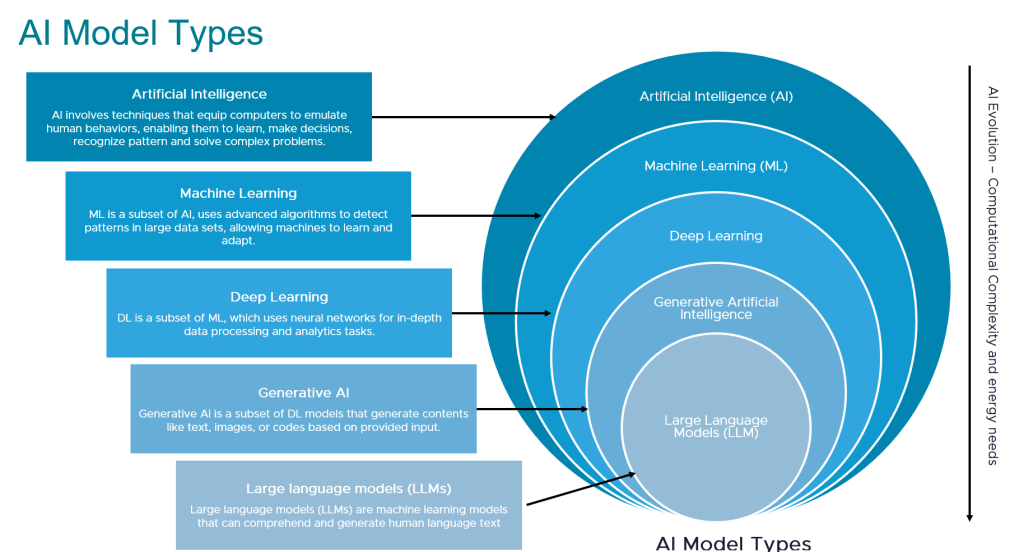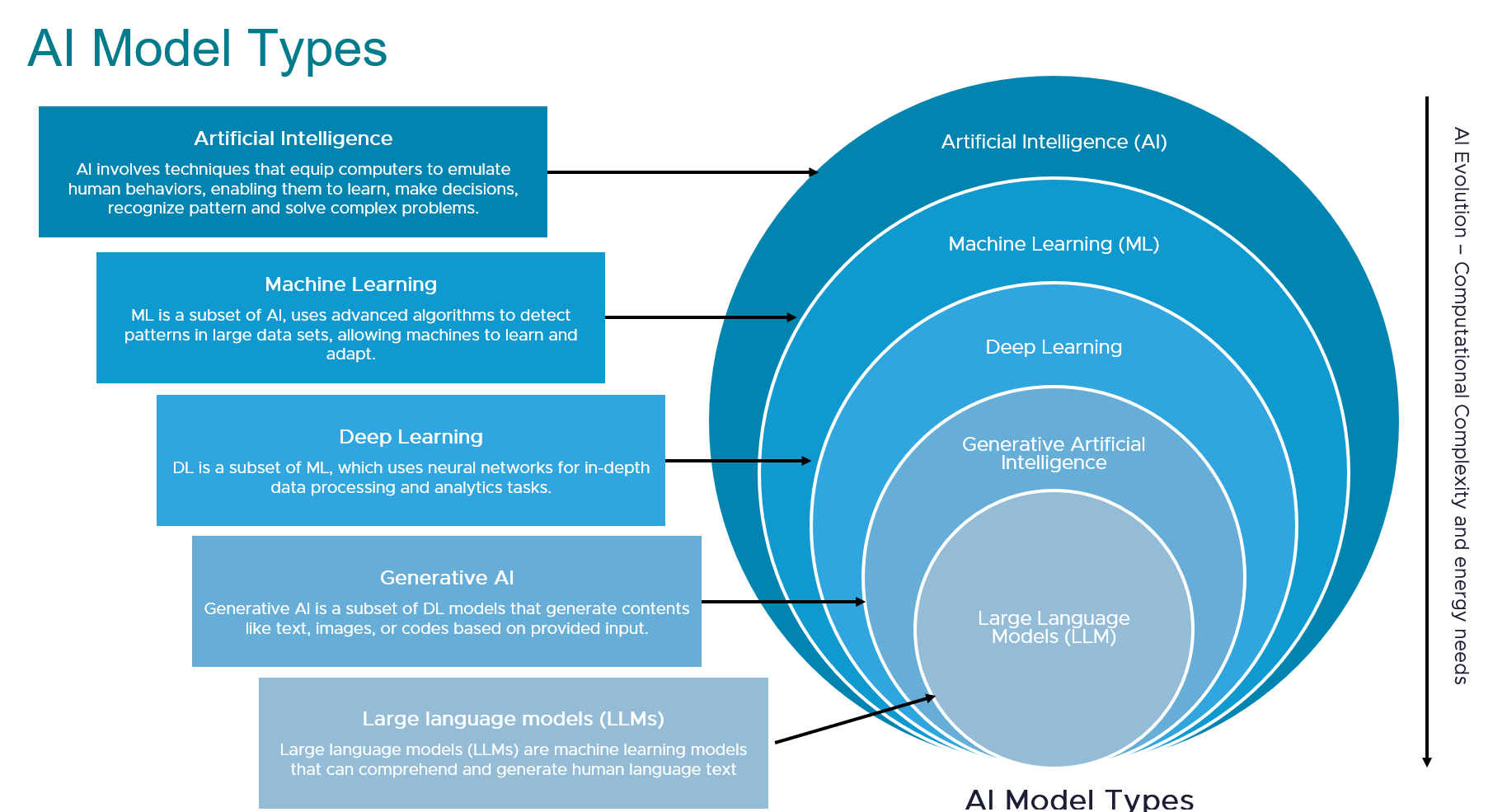Artificial Intelligence discussion with customer and cloud providers has been hyper focused on Large Language Modules (LLMs) lately. Thanks to their vast and easy of use cases LLM brings, LLM has quickly picked on fire. I still feel it’s unjust how other AI Model Types have often gone unnoticed. As our VMware Private AI Foundation allows us not to only deliver the foundation for LLMs but a vast array of AI Model Types, I wanted to introduce them here, and discuss when some of them might be a more natural fit for the use case.

I will go through the AI Model Types from the widest type to the more specialized ones. Usually a top level model type includes the models of it’s sub model type, but the opposite is not true. In layman’s terms, every LLM model is an AI model, but not every AI Model is LLM model. It is very important to pick the right AI Model Type that best address your issue, before trying to randomly pick one especially the deeper you get, the more energy and GPU power you will require generally. Picking up the right AI Model Type can help ensure you get the ROI you are looking for while reducing your TCO.
Artificial Intelligence: AI involves techniques that equip computers to emulate human behavior, enabling them to learn and make decisions, recognize patters, and solve complex problems in a manner akin to human intelligence. This is where all started and every AI Model of the other layers will be a sub model of it.
Machine learning: ML is a subset of AI, uses advanced algorithm to detect patterns in large data sets, allowing machines to learn and adapt, ML algorithms use supervised or unsupervised learning methods.
Deep Learning: DL is a subset of ML which uses neural networks for in-depth data processing and analytical tasks. DL leverages multiple layers of artificial neural networks to extract high-level features from raw input data, simulating the way human brains perceive and understand the world. Deep Learning Models are great at detection and can have use cases such as ultrasound detection, fraud detection, stock trading forecasting, and so on. On those use cases where more than text is involved such as voice, images, or videos LLM won’t be able to deliver the job and Deep Learning Models might be the way to go. In some others, using DL models might just be more efficient if the capabilities of generating new data is not required.
Generative AI: Generative AI is a subset of DL models that generates content like text, images, or code based on provided input. Trained on vast data sets, these models detect patterns and create outputs without explicit instructions, using a mix of supervised and unsupervised learning. Notice this include beyond what LLM can do on text and can address other media types. Hence if you are trying to generate beyond text you might need to go for a Generative AI model rather than LLM.
Large Language Models (LLMs): Large Language Models are machine learning models that can comprehend and generate human language text. While it’s super powerful and becoming very easy to use overtime. It does not solve every AI problem, and you might need to consider an alternative AI Model Type.
Don’t get me wrong. Large Language Models are very powerful and what brought AI to the forefront again lately. It has tons of use cases from chatbot to enhancing security software or Fraud detection. Just keep in mind though that it’s not the only AI Model Type out there and you have more options to consider. It is great to learn that our VMware Private AI Foundation can be the base for helping your run many of those AI Model Types including LLM at the forefront of it, while keeping you with choice.

One response to “Artificial Intelligence Model Types”
Interesante topico